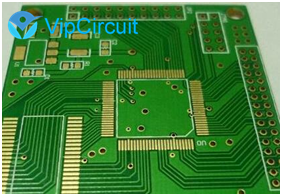A brief history of PCB board development
A brief history of PCB board development
History
Before the advent of printed circuit boards, the interconnection between electronic components is to rely on the wire directly connected to form a complete line.
In contemporary, the circuit bread board only exists as an effective experimental tool and printed circuit board in the electronics industry has become a dominant position.
In the early 20th century, people in order to simplify the production of electronic machines, reduce the wiring between electronic components, reduce production costs and other advantages, so began to study the way to replace the wiring in print.
In the past 30 years, engineers continued to propose the use of metal conductors for wiring on insulated substrates. And the most successful is the 1925, Charles Ducas came from the United States printed circuit patterns on insulated substrates and, in electroplating mode, successfully established conductors for wiring.
Until 1936, the Austrian Paul Eisler published foil technology in the UK, and he used a printed circuit board in a radio device. And in Japan, GongBen successfully applied for a patent by spraying the wiring method (concession No. 119,384th). In both cases, Paul Eisler's approach is the most similar to today's printed circuit boards, which are called subtract methods, and Charles Ducas, GongBen’s approach is to add only the required wiring, called additive method.
1941, the United States paint the copper paste on talc as wiring to make a near-letter tube.
1943, Americans used the technology in a large number of military radios.
1947, epoxy resin began to be used as a base board. At the same time, NBS began to study the fabrication technology of coil, capacitor and resistor by printed circuit technology.
1948, the United States officially recognized the invention for commercial use.
Since the 1950s, the low calorific value of transistors has replaced the vacuum tube status, the printed circuit version technology has been widely used. And at that time with etching foil membrane technology as the mainstream.
1950, Japan uses silver paint as wiring on glass substrates, and copper foil as wiring on the paper phenolic substrate (CCL) made of phenolic resin.
1951, the appearance of polyimide makes the heat resistance of the resin further also made the polyimide substrate.
1953, Motorola developed the electroplating through hole method. This method is also applied to the later multilayer PCB.
Printed circuit boards are widely used in the 60 's after 10 years, Its technology is becoming more and more mature.
1960, V. Dahlgreen attached the metal foil film with the printed circuit to the thermoplastic plastic, making out a flexible printed circuit board.
1961, Hazeltine Corporation made a reference to electroplating through-hole method to produce multilayer board.
1967, one of the added-layer methods was published “Plated-up technology”.
1969, Fd-r made a flexible printed circuit board with Polyimide.
1979, PacTel published the "PacTel method" of one of the layer-adding methods.
1984, NTT developed the "Copper Polyimide method for film loops".
1988, Siemens developed a microwiring substrate printed circuit board.
1990, IBM developed the Surface laminar CIRCUIT,SLC of the layer-adding printed circuit board.
1995, Panasonic Corporation developed the ALⅣH printed circuit board.
1996, Toshiba developed the bit of the layer-adding printed circuit board.
At the end of the 1990, the multilayer printed circuit board was also formally applied in large quantities until now.

Development
In recent more than 10 years, China's printed circuit board (referred to as PCB) manufacturing industry develop rapidly, output value, total production both ranked first in the world. With the rapid development of electronic products, the price war has changed the structure of the supply chain, China has a combination of industrial distribution, cost and market advantages, has become the world's most important production base of printed circuit board.
Printed circuit boards from single-layer to double-sided, multilayer and flexible board, and continuously develop towards high precision, high density and high reliability of the direction of development, so that the printed circuit board still maintains a strong vitality in the future development of electronic products.